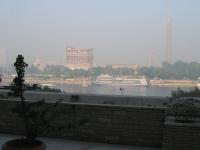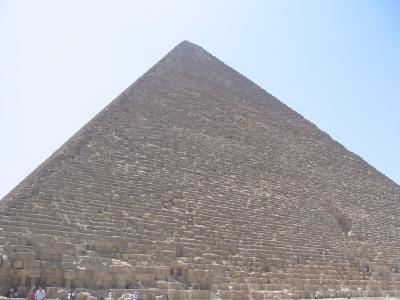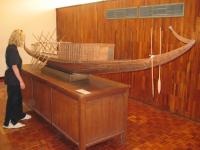It was a bit of an adjustment to step out of the first class cabin of a British Airways jumbo jet and enter the world of Egypt, but we adjusted fairly quickly. Given our lack of knowledge of the country (we didn't find anyone who had visited recently and could give us accurate advice) we decided to purchase a tour for our entire visit in advance - this was a private arrangement just for us and included picking us up at all the airports, checking us into hotels, taking us to all the sights and providing professional guides to explain what we were seeing. It was quite expensive (esp. considering how cheap things are in Egypt) but we have no regrets, being on our own in a country like that with little up-to-date knowledge on how to get around would have likely caused us to fret too much and not be able to enjoy it nearly as much.
We arrived very late on September 1st so we basically just drove to our hotel in a van supplied by the tour operator and went to bed. One note - if you decide to book a visit to Egypt on your own we'd recommend sticking to hotels that are rated 5 stars, unless prices rise a lot it's hardly worth risking staying in anything less (to give you an idea, the rates for a double room in various 5-star hotels in Egypt and Luxor ran around $50-$60 a night at the time we visited).
In the morning we were greeted by a view of the Nile from the windows of our hotel room.
We didn't have much time to admire the view, though, as it was time to go visit the famous Egyptian Museum. The chaos in front of the entrance was pretty over-whelming, and we were glad we had someone with us to show us what line to get into next and all that. One word of advice if you go - decide ahead of time whether you want to take pictures inside, it's 10 Egyptian Pounds (about $1.50 at the time we visited) extra and they have an X-ray machine whose sole purpose appears to be to look for cameras on folks that didn't pay the camera surcharge at the entrance.
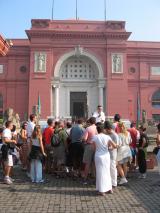 |
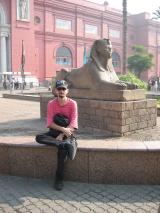 |
Our next stop was Giza and we soon discovered that the pyramids are a bit like the Grand Canyon - no matter how many pictures you may have seen and how much you've heard, it's only when you're actually standing there that you can truly appreciate the immense scale of the things. Pictures can't really tell the story but we'll try anyway ...
Climbing the pyramids have been forbidden for many years, so at least one of us was spared the humiliation of trying to climb to the top and failing miserably. Did we mention that it was almost 110 degrees Fahrenheit ? We're quite used to those kinds of temperatures, but we don't often climb pyramids during the summer in Nevada / Arizona.
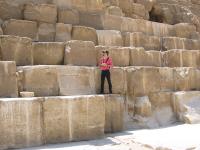 |
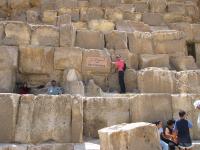 |
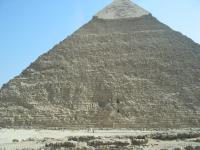 |
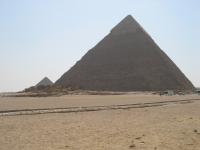 |
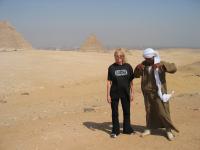 |
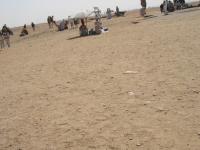 |
Right next to the pyramids is the "Solar Boat" museum which houses one of the boats that - historians speculate - may have been used for transporting the pharaoh's body to his tomb in the Valley of the Kings. They had two boats - one with sails and one with oars, since in direction they could sail with the wind and in the other they had to row. While they were going up / down the Nile on one of the boats, the second boat was disassembled and stored on the first boat. Here is a model of the boat to give you an overall idea, as it's quite difficult to capture the real thing in one frame.
Here is a picture of the real thing, with a small person for scale. Of course the boats were found disassembled and it took quite a bit of work to put them together.
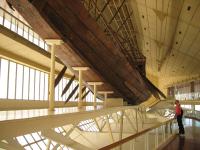 |
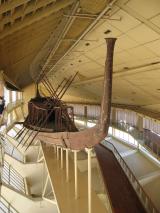 |
The best way to end the day is a nice, slow ride on a terribly smelly beast.
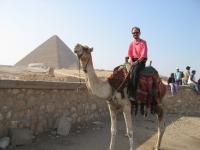 |
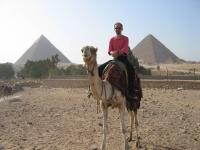 |
Please click "Next" below to continue the Egypt story ...
